
” Early to bed and early to rise, makes a man healthy, wealthy and wise” – Benjamin Franklin
Sounds familiar…??
We all grew up with our elders quoting this old adage. But somehow now sleep has become a casualty of modern life. I often find parents saying that our kid does not sleep till 12 or 1 in the night. Some are happy about it and say it with pride and some are worried about it.
Sleep, (I don’t know whether you realize or not), is extremely important to support children’s development both physically and mentally. Establishing good sleep patterns can help children to meet their full potential. It can improve a child’s quality of life, memory, learning, attention, and behavior. Children with good sleep do better in school and have lower rates of mental and physical health problems than those with sleep problems. Believe it or not, it also important for you as a parent (for your own mental health).
Therefore, as a parent it is important to enforce good sleep habits early in your child’s life.
A well-rested household usually makes for a happier home.
HOW MUCH SLEEP DOES MY CHILD NEED?
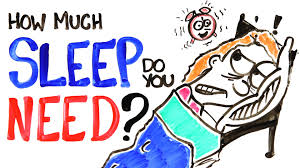
Sleep needs change as children get older. There are set guidelines that define the amount of sleep needed by children for optimal health. Regularly getting this number of hours of sleep can help your child avoid health risks associated with sleep deprivation. This is a general guideline that applies to most children but some people could have different sleep needs. It’s important to remember if your child sleeps less or more than the average it’s not always an issue! It might be tempting to think that your children can also get by with less sleep than they need, or that they should be able to cope fairly well with a few skipped hours of sleep. But this is not true.
Recommended sleeping hours per 24 hours as per age of the child: as per The American Academy of Sleep Medicine (AASM)
- Newborns–3 months: 16–18 hours (including naps)
- 4 months to 12 months: 12 to 16 hours (including naps)
- 1 year to 2 years: 11 to 14 hours (including naps)
- 3 years to 5 years: 10 to 13 hours
- 6 years to 12 years: 9 to 12 hours
- 13 years to 18 years: 8 to 10 hours
WHAT ARE THE SIGNS THAT MY CHILD IS NOT GETTING ENOUGH SLEEP?

Children who do not get enough sleep can show decreased levels of alertness, poor school performance, and bad mood. Young children may even have too much energy or hyperactivity leading to behavior issues. In teenagers, it can sometimes show up as mood changes and irritability.
Listed below are just a few of the symptoms of sleep deprivation in children:
- Learning problems: Concentration issues/ difficulty remembering things/ hyperactivity
- Mental health/behavioural issues/headaches
- Lowering of immune system
- Weight gain/growth issues
- In older age: hypertension/obesity/depression etc.
IS NAP TIME REQUIRED?

Napping is a normal behavior in children. Most young children take naps during the day. Newborns and young infants may take several naps during the day. By 9-12 months, infants have a pattern of 2 naps a day and by 15-24 months, most children may take only a single long afternoon nap. Older children may not nap at all. Naps usually disappear by 5 years of age. Naps in the daytime do help pre-school children to avoid becoming over-tired. Ironically an over-tired toddler is harder to get to sleep than a well-rested one. So naps in pre-school children should be encouraged and scheduled so that they aren’t too close to bedtime. A poorly timed nap can affect your child’s sleep at night.
GOOD SLEEP ROUTINES

Everybody can benefit from having a good sleep routine – even grown ups! This is also called having good “sleep hygiene.” A good sleep routine needs to be planned well in advance. Consistency and firmness are also key.
- Make sufficient sleep a family priority: As I say always, you are a role model for your child. Understand first yourself the benefits of getting enough sleep. Set a good example. Show them it is a part of a healthy lifestyle just like healthy eating and exercise by practicing good sleep hygiene yourself. It is understandable that sometimes with the current job profiles it is difficult, but at least give it a try.
- Stick to a realistic and consistent age appropriate routine: We all have an internal body clock, sometimes referred to as a circadian rhythm. Our body systems function according to it. Have a set bedtime and wakeup time for your child every day of the week including non-school nights. There should not be more than about an hour difference from one day to another. Regular late weekend nights or sleeping-in can throw off your body clock out of rhythm.

- Predictable sequence: Have a set bedtime routine following a predictable sequence of events daily, such as brushing teeth, taking a warm shower or using washroom, changing into nightwear and reading a story etc. It should not last for > 15- 20 mins. Many parents like to use the “4 Bs”: brush, bath, book, bed.
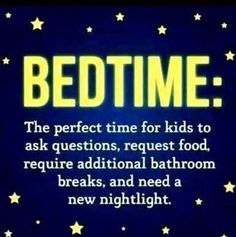
- Beds are for sleeping: Avoid spending lots of non-sleep time in bed – spending hours lying on a bed doing other activities before bedtime keeps our brains from associating the bed with sleep time.
- A comfortable, cozy room: Child’s bedroom should be cool, quiet and comfortable. Melatonin is a hormone which helps us to go to sleep and it occurs naturally in our bodies when it gets dark. Thats why it is a good idea to put your child to bed in a dark environment and to dim the lights in the run up to bedtime. A low level night light is acceptable for children who find completely dark rooms frightening. Keep your child’s bedroom at a comfortable temperature during the night (about 75 F/25-26 C) and not too hot or cold.
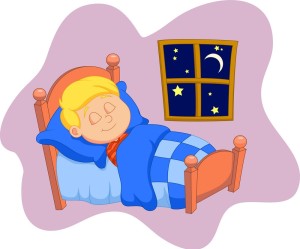
- Relaxing activities: Make the hour before bed for shared, quiet time like listening to relaxing, calm music or reading their favourite story book. Avoid high stimulation activities just before bed, such as watching television, playing video games or exercise and limit their use at least 1 hour before bedtime. Children can easily develop the bad habit of “needing” the television to fall asleep. It’s also much more difficult to control your child’ viewing if the set is in the bedroom. Melatonin production is interfered with by screen activities. Do not do these things during a nighttime awakening either. It is best not to have video games, televisions or telephones in the child’s bedroom. Set a “technology curfew” especially for older kids.
- Exercise: Make sure your child spends time outside everyday whenever possible and is involved in regular exercise. Having physical exercise as part of the day at least 3 hrs before bed often helps with falling asleep and staying asleep for a longer time.

- Avoid caffeine: Avoid caffeine (sodas, chocolate, tea, coffee) in the afternoons/evenings. Even if caffeine doesn’t prevent falling asleep it can still lead to shallow sleep or frequent awakenings.
- Take adequate, healthy meal well in advance and avoid big meals: But don’t send your child to bed hungry. A light snack (such as milk and cookies) before bed is a good idea. Heavy meals within an hour or two of bedtime, however, may interfere with sleep.
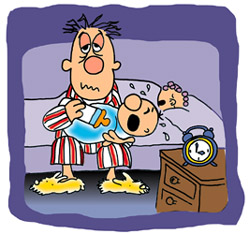
- Children should be put to bed drowsy, but still awake. Letting them fall asleep in other places forms habits that are difficult to break.
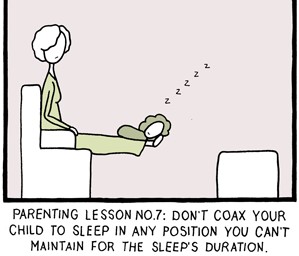
- If a child is awake in bed tossing and turning, it is better for them to get out of bed to do a low stimulation activity (e.g., reading), then return to bed later. This keeps the bed from becoming associated with sleeplessness. If still awake after 20 to 30 minutes, spend another 20 minutes out of bed before lying down again. Be gentle but firm if your child protests.
- If your child is never drowsy at the planned bedtime, you can try a temporary delay of bedtime by 30 minute increments until the child appears sleepy, so that they experience falling asleep more quickly once they get into bed. The bedtime should then be gradually advanced earlier until the desired bed time is reached.
- Cuddle up: Give a hug or a kiss, say goodnight to your child or sing a lullaby. Security objects at bedtime are often helpful for children aged 1 to 3 yrs who need to feel safe and secure especially when their parent is not present or they are sleeping alone. Try to include their favourite doll, toy or blanket when you cuddle or comfort your child but make sure it does not pose a choking hazard or cause injury. But cover over toys or remove them if they are causing a distraction at night, so that they are out of sight.

- Clocks are for waking up: Those children who stare at clocks should have their clocks turned away from them.
- No punishment zone: Don’t use your child’s bedroom for time-out or punishment.
- Make sure your child feels safe at night: If your child feels scared about going to bed or being in the dark, you can praise and reward them whenever they are brave. Avoiding scary TV shows, movies and computer games can help too. Don’t ignore their fears.
- No worries: Worry time should not be at bedtime. Children with this problem can try having a “worry time” scheduled earlier when they are encouraged to think about and discuss their worries with a parent.
- Short and sweet bedtime checkups: When checking on a child at night (when they are sleeping in their own rooms), checks should be “brief and boring.” The purpose is to reassure the child you are present and that they are OK.
- Maintain a sleep diary: To keep track of naps, sleep times and activities to find patterns and target problem areas when things are not working.
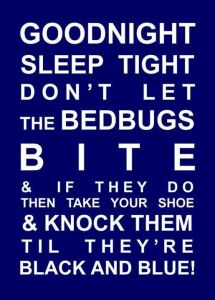
If still you have trouble getting your child to sleep, contact your paediatrician or health care provider to rule out any sleep disorder.
With a butterfly kiss and a ladybug hug; sleep tight little one, like a bug in a rug!!
: zzzzzzzzzzzzzz !!!!
Dr Garima | themoppetsclinic 🙂
Resources:
- AASM guidelines: J of Clin Sleep Med; May 2016

Thank you Doc for the informative article. Really simple to understand. From today onwards i would take care that my kids follow the instructions as cited in ur writing.
Thank you Gaurev for liking the article
Dr. Garima thanks for amazing article. Hopefully this Will help me to structure my baby’s sleep cycle. All your articles proves to be very helpful to deal with real life situations we come across these days.
Thank you Divya for appreciating the write ups. All the best.